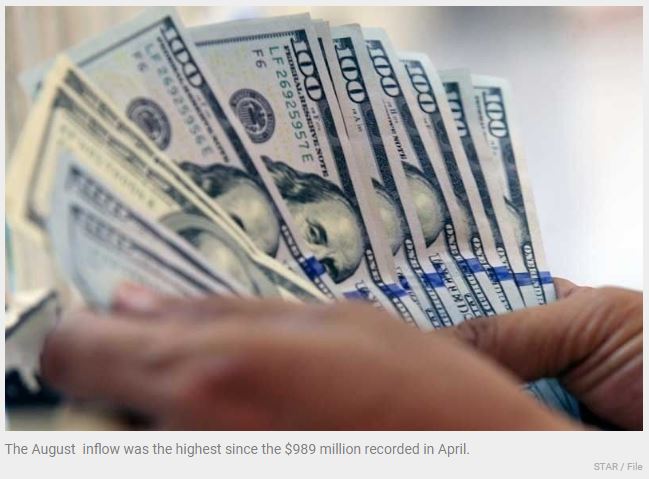Philippines: Foreign direct investments hit 4-month high in August
MANILA, Philippines — The net inflow of foreign direct investments (FDI) continued to decline, even though it hit a four-month high of $797 million in August, due to global headwinds caused by monetary policy tightening to fight soaring inflation, data released by the Bangko Sentral ng Pilipinas (BSP) showed.
The August inflow was the highest since the $989 million recorded in April.
Data released by the central bank showed that the net FDI inflow of FDIs in August was 19.2 percent lower than the $987 million booked in the same month last year, but was 73.2 percent higher than the 14-month low of $460 million recorded in July.
The central bank pointed out that all major FDI components posted lower inflows last August.
“In August 2022, FDI net inflows decreased as all major FDI components posted lower net inflows, particularly non-residents’ net investments in debt instruments of their local affiliates,” the BSP said in a statement.
Investments in debt instruments declined by 15.3 percent to $600 million in August from $709 million in the same month last year as foreign companies settled more debt.
From January to August this year, the BSP reported that net FDI inflow declined by 13 percent to $5.9 billion from $6.78 billion in the same period last year.
“The slowdown in FDI may be attributed to concerns over weakening global growth prospects, particularly with the moderating demand and policy tightening in major economies,” the central bank added.
Rizal Commercial Banking Corp. chief economist Michael Ricafort said that the net FDIs in August are still among the lowest in nearly a year, as recently weighed by higher inflation, weaker peso exchange rate, and the sharp increase in global, as well as local interest rates, that led to higher borrowing costs that are drags to new investments globally and locally.
Ricafort also cited some increase in global and local market volatility after US inflation posted a new 40-year highs that prompted aggressive US Federal Reserve rate hikes that led to a stronger US dollar versus major global currencies and led to higher risks of recession in the US.
Other risk factors for FDI data include adverse economic effects of the Russia-Ukraine conflict that led to still relatively higher global commodity prices and inflation, more aggressive Fed rate hikes resulting in higher global interest rates and borrowing costs to finance FDIs, and the continuation of some lockdowns in China.
Source: https://www.philstar.com/business/2022/11/11/2222918/foreign-direct-investments-hit-4-month-high-august-


 Thailand
Thailand




